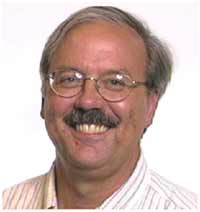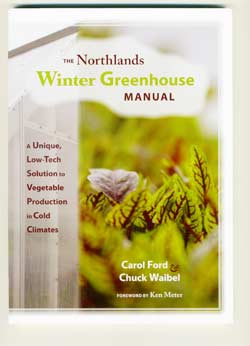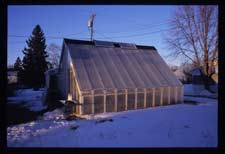If we are going to build effective community-based food systems in temperate regions we will have to find ways to extend our growing seasons without consuming fossil fuels. This includes places globally where winter daylight is sparse or overnight freezes are likely (for example, most of the U.S., Europe north of the Mediterranean countries, or southern reaches of Africa and South America) but also semi-tropical regions where growth slows during cooler days. Japan and Italy have made extensive use of greenhouses for decades, but these mostly depend on fossil fuel heat.
Two pioneers in showing that farmers in temperate climate can grow food in the winter months with less reliance upon oil are Chuck Waibel and Carol Ford, owners of the Garden Goddess greenhouse in western Minnesota. The couple runs a Community Supported Agriculture (CSA) farm that ships fresh greens every winter, from October to April, to their neighbors.
I first visited the greenhouse one January day when the wind chill was 13 below. The plants were snug and warm, clearly thriving despite the staunch winds outside. At sunset, when I entered the greenhouse, the indoor temperature was 65 degrees. Chuck chuckled as he told me that he had to open the greenhouse door for an hour or so prior to my arrival, so I would not be too hot. It had been 85 degrees in mid-afternoon.
Leaves shining, roots planted firmly in organic soil, and happily humid, the fresh greens were a welcome respite to winter winds and blowing snow. The mustard greens had a sharp, tart taste. Red, green, and purple colors competed for attention as I gazed around the greenhouse.
Building more greenhouses modeled after Carol and Chuck’s is the northland’s most essential strategy for extending our independence. Now, you can do it too.
For more information, and to purchase Northlands Greenhouse Manual



